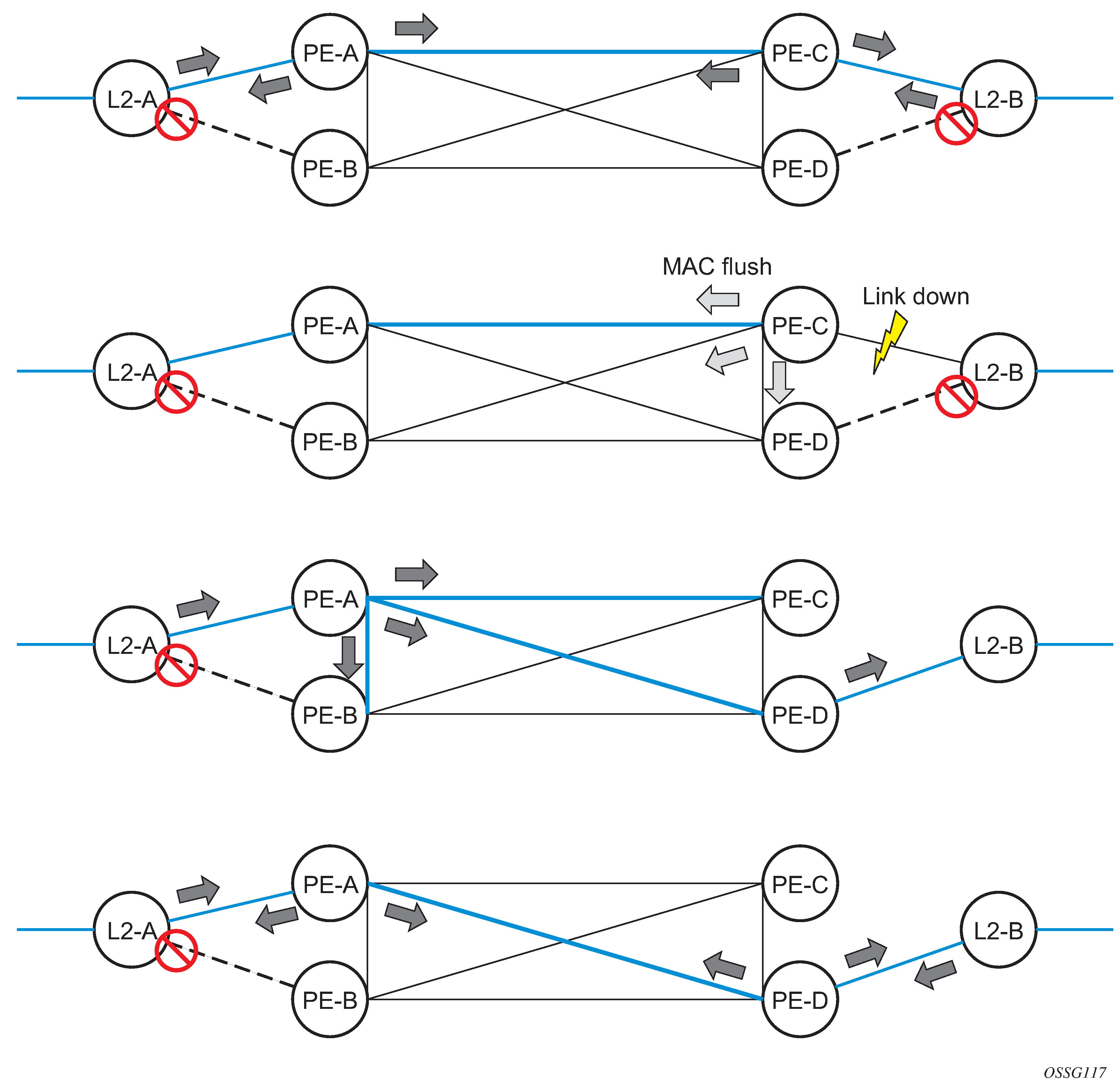
Figure 1 shows a dual-homed connection to VPLS service (PE-A, PE-B, PE-C, PE-D) and operation in case of link failure (between PE-C and L2-B). Upon detection of a link failure, PE-C sends MAC-address-withdraw messages, which indicates to all LDP peers that they should flush all MAC addresses learned from PE-C. This leads to a broadcasting of packets addressing affected hosts and relearning in case an alternative route exists.
The message described here is different than the message described in RFC 4762, Virtual Private LAN Services Using LDP Signaling. The difference is in the interpretation and action performed in the receiving PE. According to the standard definition, upon receipt of a MAC withdraw message, all MAC addresses, except the ones learned from the source PE, are flushed. This section specifies that all MAC addresses learned from the source are flushed. This message has been implemented as an LDP address withdraw message with vendor-specific type, length, and value (TLV), and is called the flush-all-from-me message.
The RFC 4762 compliant message is used in VPLS services for recovering from failures in STP (Spanning Tree Protocol) topologies. The mechanism described in this section represents an alternative solution.
The advantage of this approach (as compared to STP-based methods) is that only the affected MAC addresses are flushed and not the full forwarding database. While this method does not provide a mechanism to secure alternative loop-free topology, the convergence time depends on the speed that the specified CE device opens an alternative link (L2-B switch in Figure 1) as well as on the speed that PE routers flush their FDB.
In addition, this mechanism is effective only if PE and CE are directly connected (no hub or bridge) as the mechanism reacts to the physical failure of the link.